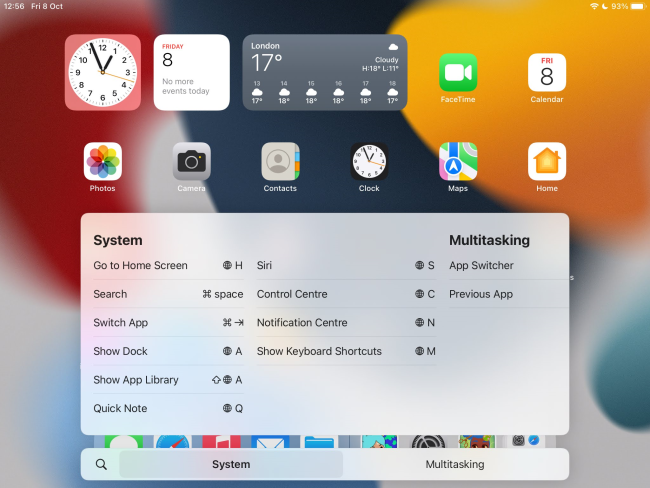Short guide:
- If you’re using a Bluetooth keyboard, connect it to your device by tapping the Settings icon to open Settings, then tapping Bluetooth.
- Set your Bluetooth keyboard into pairing mode (look at the instructions for details), then select it under Other Devices. Tap Pair or follow any on-screen prompts, and your keyboard should be ready for use.
- iOS has several features that can help make an external keyboard easier to use. Open the Settings app and tap Accessibility.
- On the Accessibility screen, scroll down and tap Keyboards.
- Use the Key Repeat and Delay Until Repeat settings to adjust how the keyboard handles repeat key presses or keys held down.
- Tap Sticky Keys to use keyboard shortcuts by pressing a modifier key then a letter key, rather than both keys at the same time.
- To see what keyboard shortcuts you can use while using Sticky Keys, press the cmd key (⌘) key and wait a few moments.
Before and after
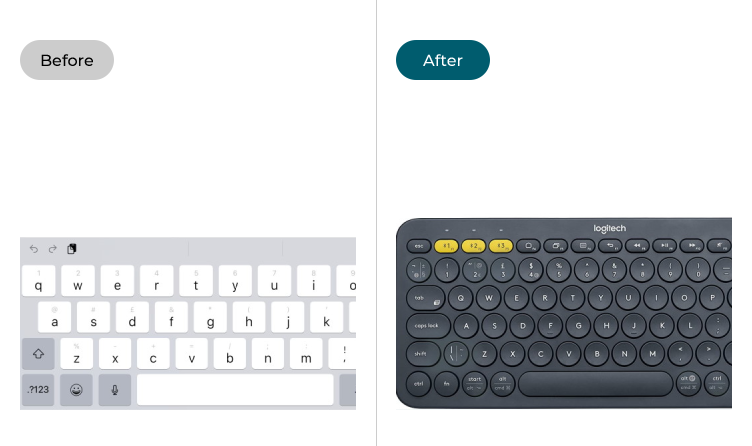
This section explains how to connect and customise an external keyboard in Apple iOS 16, with step-by-step instructions and pictures of the screen to help.
Open the Bluetooth settings
1. If you’re using a Bluetooth keyboard, connect it to your device by tapping the Settings icon to open Settings, then tapping Bluetooth.
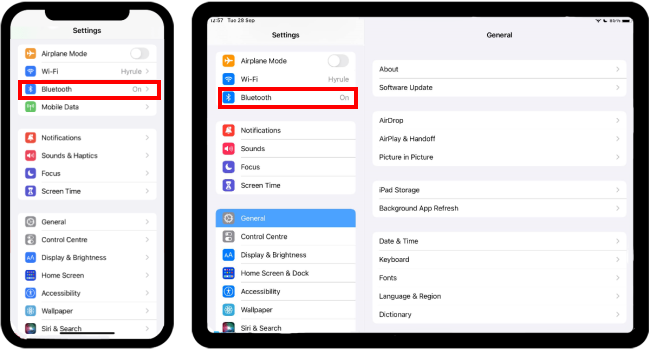
Pair your Bluetooth keyboard
2. Set your Bluetooth keyboard into pairing mode (look at the instructions for details), then select it under Other Devices. Tap Pair or follow any on-screen prompts and your keyboard should be ready for use.
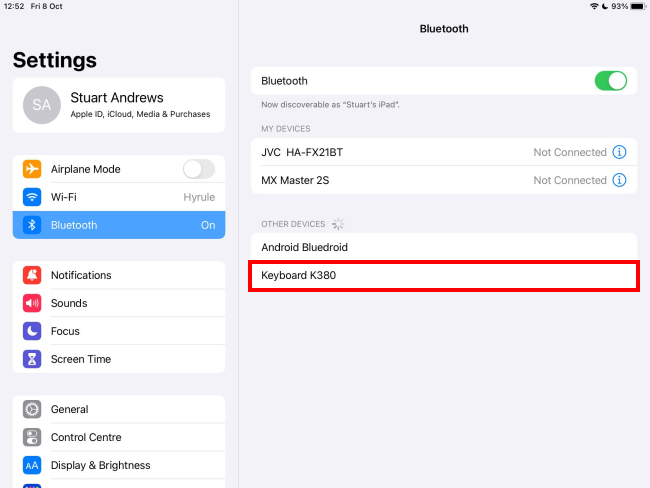
Open the Accessibility settings
3. iOS has several settings and features that can help make an external keyboard easier to use. To find them, go back to Settings and tap Accessibility.
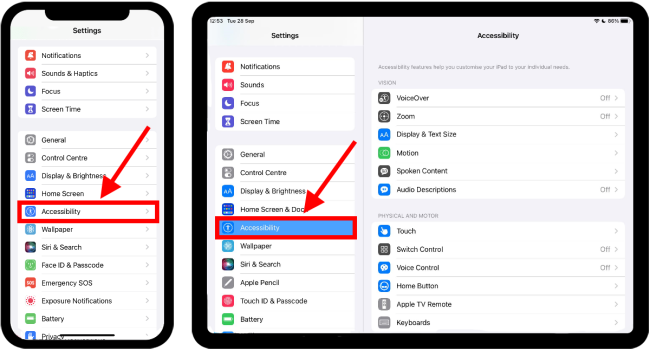
Find the Keyboards settings
4. On the Accessibility screen, scroll down to the Physical and Motor section and tap Keyboards. You can now adjust the keyboard settings to make it easier to type or use keyboard shortcuts.
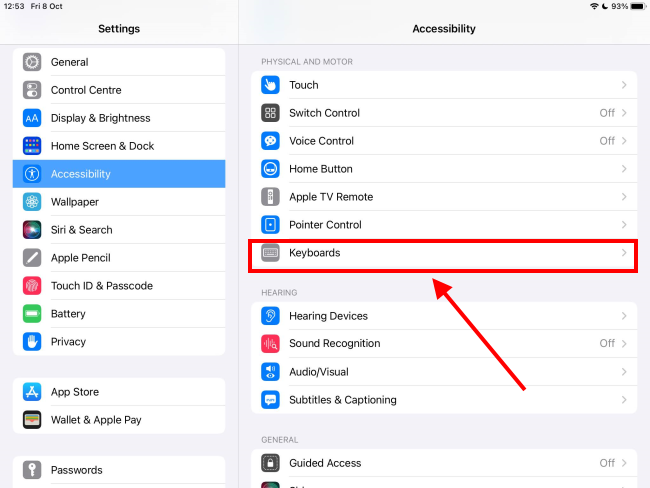
Customise the Key Repeat settings
5. By default, you can type the same character or repeat the same action, such as deleting text, by keeping the key pressed down. If you find you're often getting repeat characters when you don't want them, you can customise this. Tap Key Repeat.
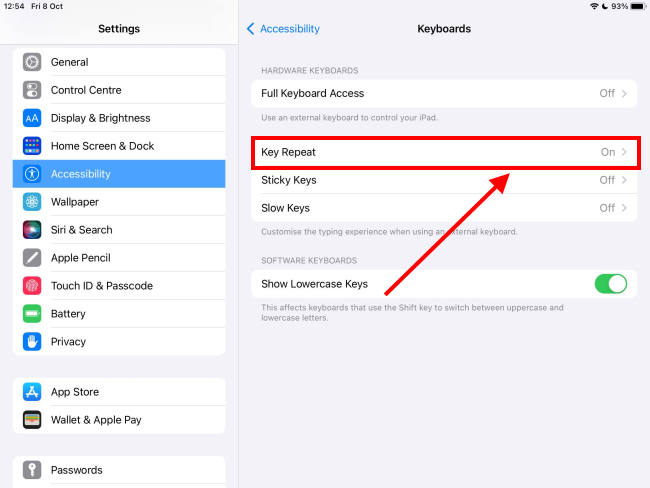
Disable or adjust Key Repeat
6. Tap the toggle switch next to Key Repeat if you want to disable it or use the other two settings to customise it. Key Repeat Interval adjusts the length of time iOS waits when you hold down the key before repeating the key press again. Tap the + (plus) and – (minus) buttons to adjust the interval length.
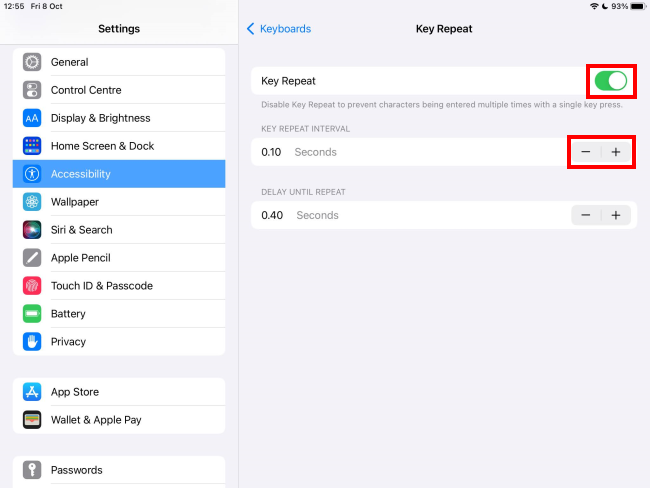
Adjust Delay Until Repeat
7. The Delay Until Repeat setting adjusts the length of time between you pressing the key for the first time and the first repeat. Tap the + (plus) and – (minus) buttons to adjust the delay. Set a longer delay if you find you are triggering the key repeat by accident.
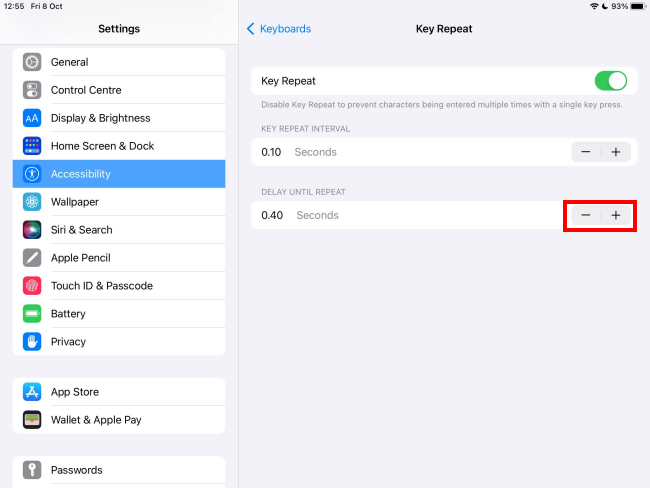
Enable Slow Keys
8. Tap the blue Keyboards link to return to the Keyboards settings. With Slow Keys enabled, your device will ignore key presses until you hold down a key for a set amount of time. This means your device won't register a key press if you accidentally press a key for just a moment. To enable it, tap Slow Keys.
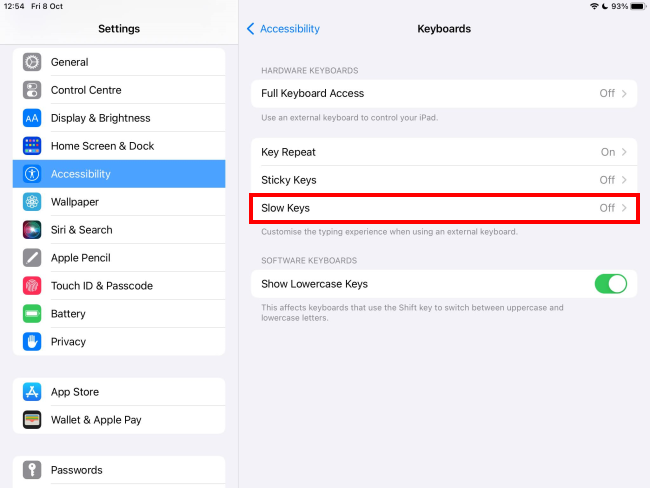
Adjust Slow Keys
9. On the next screen, tap Slow Keys to set the toggle switch to on, then tap the + (plus) and – (minus) buttons to adjust the length of the delay.
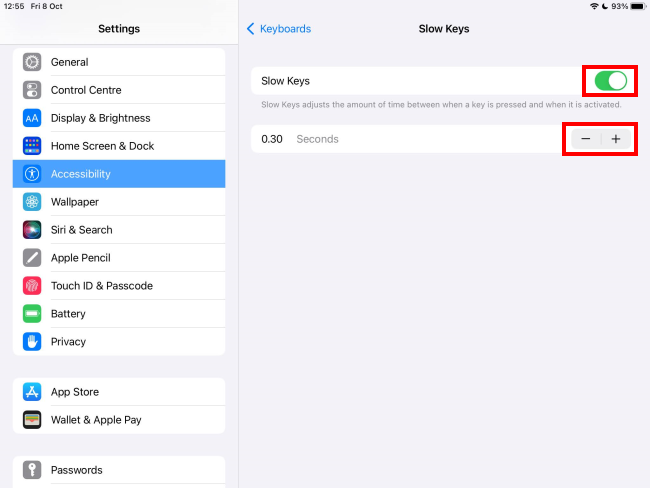
Set up Sticky Keys
10. Tap the blue Keyboards link to return to the Keyboards settings. When using an external keyboard, you can perform many of the same keyboard shortcuts that you can on a laptop or desktop computer, by pressing a modifier key (CMD, ALT or SHIFT) at the same time as another key. For example, Cmd + C to copy an item. With Sticky Keys enabled, you can press each key, one after the other, rather than at the same time. To set this up, tap Sticky Keys.
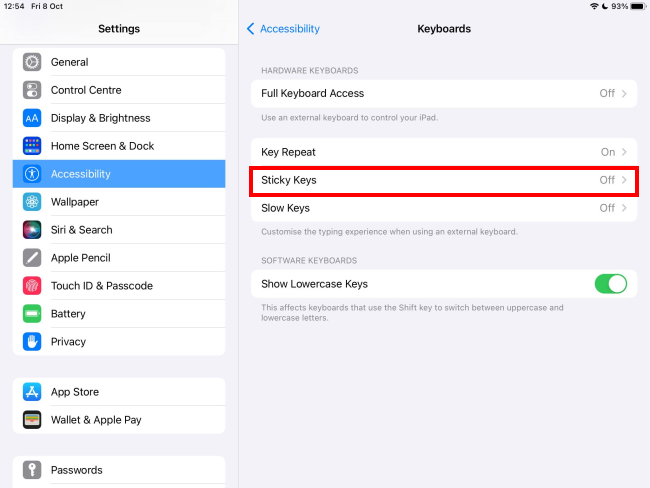
Enable Sticky Keys
11. Now tap Sticky Keys to set the toggle switch to on.
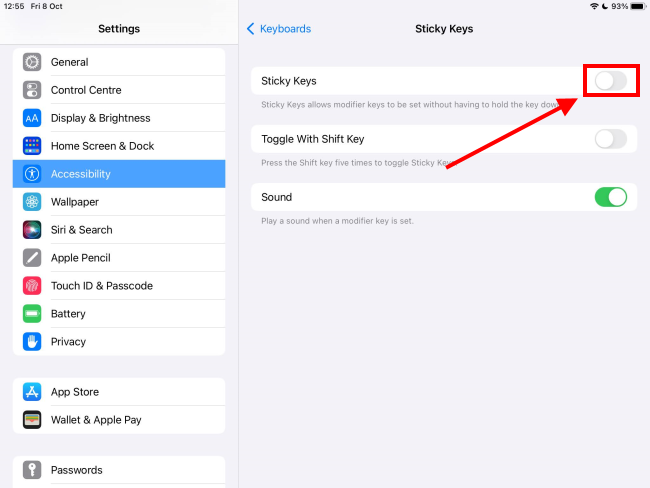
Toggle Sticky Keys with the Shift key
12. If you would like to be able to turn Sticky Keys on or off using the keyboard, tap Toggle With Shift Key to set the toggle switch to on. Now you can turn Sticky Keys on or off by pressing the Shift key five times.
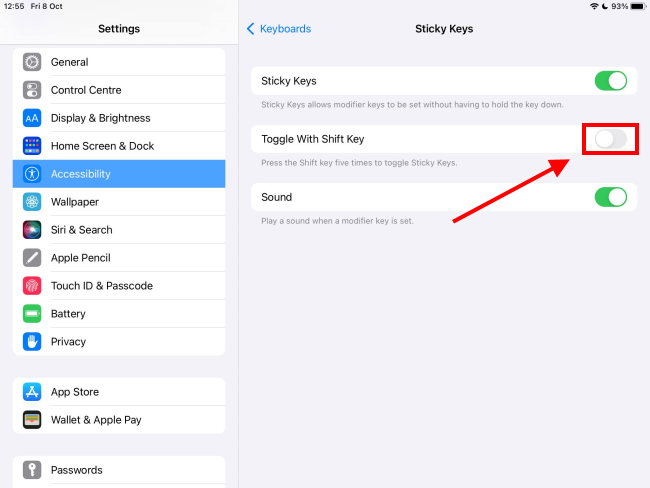
Turn off the Sticky Keys sound
13. By default, a sound will play whenever you press a modifier key while Sticky Keys is active. To turn this setting off, tap Sound to set the toggle switch to off.
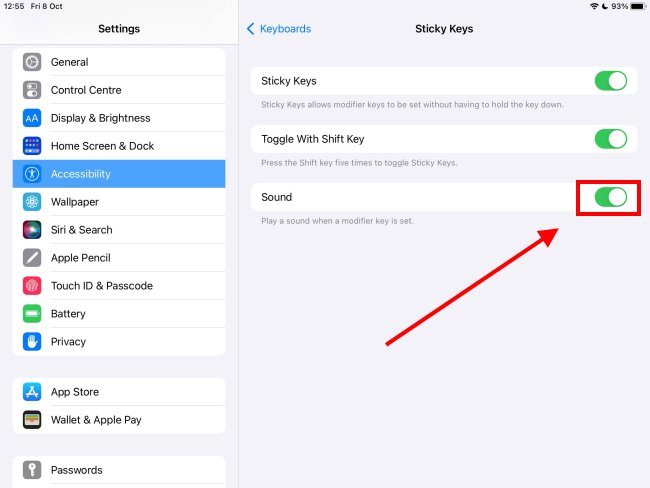
Using Sticky Keys
14. To use Sticky Keys, simply press the keys for any keyboard shortcut, one after the other. To lock a modifier key (CMD, ALT, or SHFT) in a 'pressed' state, press it twice. This will save you having to press the modifier key when you want to perform a shortcut.
To ‘un-press’ a modifier key, press it again. When you press a modifier key, the icon for that key will appear in the top right-hand corner of the screen. If you lock a modifier key, it will appear in white.
To see what keyboard shortcuts you can use, press and hold the CMD (⌘) key and wait a few moments. This works in an app or on the Home screen.
